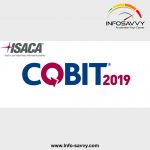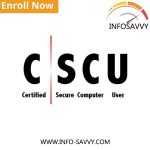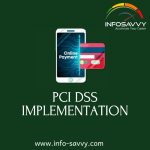Cobit5 is classroom-based course, provides an end-to-end business view of COBIT® 5 – an internationally accepted framework for governing and managing enterprise IT that supports executives and management in their definition and achievement of business goals and related IT goals. Formerly known as Control Objectives for Information and related Technology (COBIT), the current version of COBIT consolidates and integrates the frameworks of COBIT 4.1, Val IT 2.0 and Risk IT
“The COBIT 5 Implementation Guide” provides the main guidance for a practical approach to implementing the ‘Governance of Enterprise Information Technology or (GEIT)’ based on a continual improvement life cycle that should be tailored to suit an enterprise’s specific needs.
Cobit 5 Famework Overview (4 Hours)
- Evaluate Direct and Monitor (5 Process)
- Align, Plan and Organize (13 Process)
- Build Acquire Allign (10 Process)
- Deliver Service and Support(6 Process)
- Monitor, Evaluate and Assess (3 Process)
COBIT5 Implementation Lifecycle ( 4 Hours)
- COBIT 5 Implementation Lifecycle
- Phase 1—What Are the Drivers?
- Phase 2—Where Are We Now?
- The root causes associated with the respective key Phase challenges
- The Critical Success factors associated with the respective key Phase challenges
- The key roles and responsibilities required to support the respective phase.
- The challenges, their root causes and success factors in the respective Phase 1.
- The ‘need to act’ by recognizing the Continual Improvement (CI) tasks required to perform the respective phase.
- The ‘desire to change’ by establishing the Change Enablement (CE) tasks necessary to perform the respective phase.
- The Programme Management (PM) tasks, inputs and outputs required to initiate the programme.
- Whether the key roles identified are appropriate to support the activities of the respective phase.
Day 2
COBIT5 Implementation Lifecycle ( 8 Hours)
- Phase 3—Where Do We Want To Be?
- Phase 4—What Needs To Be Done?
- Phase 5—How Do We Get There?
- Phase 6—Did We Get There?
- Phase 7—How Do We Keep the Momentum Going?
- The root causes associated with the respective key Phase challenges
- The Critical Success factors associated with the respective key Phase challenges
- The key roles and responsibilities required to support the respective phase.
- The challenges, their root causes and success factors in the respective Phase 1.
- The ‘need to act’ by recognizing the Continual Improvement (CI) tasks required to perform the respective phase.
- The ‘desire to change’ by establishing the Change Enablement (CE) tasks necessary to perform the respective phase.
- The Programme Management (PM) tasks, inputs and outputs required to initiate the programme.
- Whether the key roles identified are appropriate to support the activities of the respective phase.
Introduction
Cobit5 is classroom-based course, provides an end-to-end business view of COBIT® 5 – an internationally accepted framework for governing and managing enterprise IT that supports executives and management in their definition and achievement of business goals and related IT goals. Formerly known as Control Objectives for Information and related Technology (COBIT), the current version of COBIT consolidates and integrates the frameworks of COBIT 4.1, Val IT 2.0 and Risk IT
Overview
Cobit 5 Implementation Tranning
Cobit5 is classroom-based course, provides an end-to-end business view of COBIT® 5 – an internationally accepted framework for governing and managing enterprise IT that supports executives and management in their definition and achievement of business goals and related IT goals. Formerly known as Control Objectives for Information and related Technology (COBIT), the current version of COBIT consolidates and integrates the frameworks of COBIT 4.1, Val IT 2.0 and Risk IT
“The COBIT 5 Implementation Guide” provides the main guidance for a practical approach to implementing the ‘Governance of Enterprise Information Technology or (GEIT)’ based on a continual improvement life cycle that should be tailored to suit an enterprise’s specific needs.
Course Outline
Cobit 5 Implementation Tranning
Cobit 5 Famework Overview (4 Hours)
- Evaluate Direct and Monitor (5 Process)
- Align, Plan and Organize (13 Process)
- Build Acquire Allign (10 Process)
- Deliver Service and Support(6 Process)
- Monitor, Evaluate and Assess (3 Process)
COBIT5 Implementation Lifecycle ( 4 Hours)
- COBIT 5 Implementation Lifecycle
- Phase 1—What Are the Drivers?
- Phase 2—Where Are We Now?
- The root causes associated with the respective key Phase challenges
- The Critical Success factors associated with the respective key Phase challenges
- The key roles and responsibilities required to support the respective phase.
- The challenges, their root causes and success factors in the respective Phase 1.
- The ‘need to act’ by recognizing the Continual Improvement (CI) tasks required to perform the respective phase.
- The ‘desire to change’ by establishing the Change Enablement (CE) tasks necessary to perform the respective phase.
- The Programme Management (PM) tasks, inputs and outputs required to initiate the programme.
- Whether the key roles identified are appropriate to support the activities of the respective phase.
Day 2
COBIT5 Implementation Lifecycle ( 8 Hours)
- Phase 3—Where Do We Want To Be?
- Phase 4—What Needs To Be Done?
- Phase 5—How Do We Get There?
- Phase 6—Did We Get There?
- Phase 7—How Do We Keep the Momentum Going?
- The root causes associated with the respective key Phase challenges
- The Critical Success factors associated with the respective key Phase challenges
- The key roles and responsibilities required to support the respective phase.
- The challenges, their root causes and success factors in the respective Phase 1.
- The ‘need to act’ by recognizing the Continual Improvement (CI) tasks required to perform the respective phase.
- The ‘desire to change’ by establishing the Change Enablement (CE) tasks necessary to perform the respective phase.
- The Programme Management (PM) tasks, inputs and outputs required to initiate the programme.
- Whether the key roles identified are appropriate to support the activities of the respective phase.
Benefit
Cobit 5 Implementation Tranning
- Analyse the enterprise drivers
- Apply the implementation challenges, their root causes and success factors
- Assess current process capability
- Determine target process capability
- Scope and plan improvements
- Consider practical implementation factors
- Identify and avoid potential pitfalls
- Leverage the latest good practices
- Apply the COBIT 5 continual improvement lifecycle approach to address these requirements and establish and maintain a sustainable approach to governing and managing enterprise IT as “normal business practice”.
Who Should Attend
Cobit 5 Implementation Tranning
- Consultants who want to learn how to implement, or use COBIT 5 for different scenarios for a client initiative.
- IT practitioners who want practitioner-level training and an appreciation of how to use COBIT 5 for different organisational scenarios.
- Business managers who want to have a more practical appreciation of how to apply COBIT 5 to specific business problems, pain points, trigger events and risk scenarios.
CISA http://www.info-savvy.com/product/certified-information-systems-auditor-cisa/
Lead Auditor ISO27001 http://www.info-savvy.com/product/iso-27001-lead-auditor-training-and-certification-isms/
PCIDSS http://www.info-savvy.com/product/pci-dss-implementation-training-and-certification-qsa-certified/
Cobit5 Foundation http://www.info-savvy.com/product/cobit5-foundation/
ISO 31000 Core Risk Maneger http://www.info-savvy.com/product/iso-31000-core-risk-manager/










1 review for COBIT 5 Implementation
There are no reviews yet.